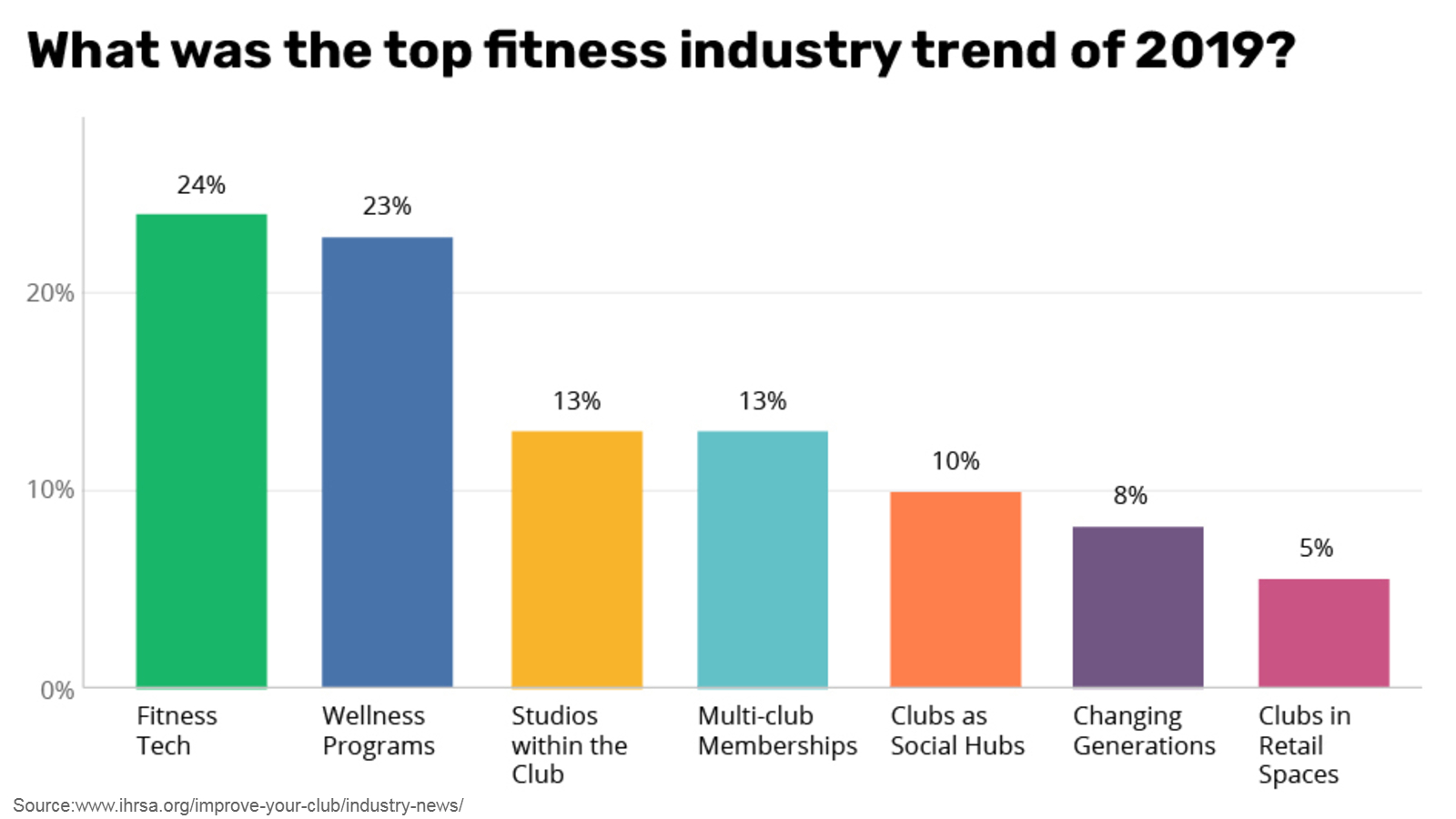Market research is an effective tool to assist your business planning, and a significant part of creating your marketing strategy. It is about collecting information that provides an insight into your customers thinking, buying patterns, and location. In addition, market research can also assist you to monitor market trends and keep an eye on what your competition is doing.
Market research is a valuable activity for all businesses. Various statistics and other research data can help you make informed decisions about your business.
Market analysis is a research tool — often presented in the form of a report — that helps you better understand a given market or industry. Market analysis is most often used by enterprises of all sizes who are thinking about venturing into a new market. For these businesses, market analysis can be an extremely valuable tool to establish whether the new venture is a smart business decision.
Sources: www.smallbusiness.wa.gov.au and www.pestleanalysis.com/market-analysis-definition/

The market changes constantly. This requires monitoring and investigation to determine how the market is changing and what new opportunities are available for the development and growth of your business. Market research involves collecting, recording and analysing all of the available information that will benefit your business to monitor and understand market changes.
Benefits of Market Research - Market research is a valuable tool to help you understand your:
-
Industry and market.
-
Customers and their needs.
-
Competitors and what they are doing.
-
Market trends and economic changes.
This understanding can help you to better focus your marketing efforts, make informed decisions about your business and make the most of opportunities. It’s important to make sure market research is part of your ongoing business plan and daily operations.
When to research your market - It's important to regularly assess:
-
Who your competitors are and their strengths and weaknesses.
-
Who your customers are and what they want.
-
Whether there are any gaps in the market.
This can be crucial during all stages of your business and can help:
-
Identify your customers.
-
Select an appropriate business location.
-
Identify new opportunities and markets.
-
Identify problem areas in your business.
-
Increase profit and growth.
It’s important to clearly define your objectives in order to achieve useful results from your research. Clearly defined objectives will help identify the best methods to conduct your research.
You will also need to determine the time frame and budget you can allocate to undertake the research. You might consider using a professional market research company to assist you.
Your market research should cover your:
-
Customers.
-
Competitors.
-
Product or services.
-
Suppliers.
-
Business location.
-
Local area industry.
There is a variety of data sources to assist you in researching your customers, competitors, industry, and location. The types of information you collect through these sources may be quantitative or qualitative.
Qualitative information measures the values, attitudes and views of a particular sample. This type of information is useful if you want to understand why people buy your products, how they respond to your advertising or their perceptions of your brand.
Quantitative information is based on statistics and may be used to predict market penetration, future earnings etc.
Refer to www.marketing91.com for information on a variety of topics related to Market Research.
‘Primary research’ refers to information gathered from original sources such as:
-
Surveys.
-
Your own market research surveys.
-
Face-to-face interviews.
-
Focus groups.
-
Customer feedback.
-
Questionnaires.
‘Secondary research’ is information and data that has already been collected and analysed by other sources such as:
-
Industry and trade publications.
-
Industry benchmark data from your industry association.
-
Social media and websites.
-
Marketing and consumer lists.
-
Newspapers and media.
-
Research reports from specialist research organisations such as, IBISWorld/Australia.
-
Free open government data.
Do your own primary research using surveys or interviews, or by talking to your customers and other businesses.
Research can help you work out where your products or services fit in the market and how they differ from those of your competitors. It can also help you work out:
-
Positioning – Whether your products or services are high-end, competitive or a low-cost alternative to the products or services offered by your competitors.
-
Anticipated demand – The amount of products or services your customers are likely to purchase. For example, how much will an individual customer buy in 6 months or 12 months?
You can collect customer data through email, online surveys, interviews, and talking directly to your customers.
This kind of direct customer research can help you discover:
-
What their needs are.
-
What they're willing to pay for different products.
-
The anticipated demand for your products.
Finding out how your customers think and behave (including their likes and dislikes) can also help you better target your marketing efforts.
Using existing customer data - If you've been in business for a while, you may already have tools and information on customers to use in your research. Check your:
-
Customer relationship management (CRM) database.
-
Customer loyalty or reward program information.
-
Point of sale (POS) system and sales records.
-
Inventory management system.
-
Records of customer complaints, feedback or suggestions.
-
Reports on customer service benchmarks and targets.
-
Website statistics and traffic.
You can collect competitor data first-hand through:
-
Observation – adverts, sales, trade magazines, general advertising or site visits.
-
Networking.
-
The internet – website, blogs and other social media.
You can use this competitor data in your strengths, weaknesses, opportunities, threats (SWOT) analysis when you develop your marketing plan. Analysing your competitors can also help you understand where your business or products fit in the marketplace.
Questions to ask when researching your competitors - Consider the following:
-
Who are your competitors?
-
What do they offer their customers?
-
Where are they located?
-
What marketing strategies do they use?
-
How do they communicate with their customers?
-
Do they have an online or social media presence?
After identifying the source and type of information you need, you can start to collect it.
It is important not to allow your opinions or preferences to affect your research. Having a preconceived idea of the results will bias your research and provide false information. Remain open-minded and be prepared for unanticipated results.
When processing data make sure you:
-
Keep your market research objectives in mind.
-
Categorise data according to what is most relevant for your business, don’t become side-tracked by the information that is just interesting.
-
Collate your data using tables or lists to make it easier to identify certain trends and themes.
You may need to collect additional information if your results are inconclusive.
Analysing the data should allow you to draw some conclusions regarding your initial objectives.
Update your business and marketing plans with the information collected from your market research.
Refer here for government statistics by topic as well as state and territory resources.
Note: Market research requires a particular skill and sometimes market research companies may need to be employed as they have the necessary and required experience and also because market research takes up a lot of time.
Successful businesses undertake market research on a regular basis to:
-
Identify potential new customers
-
Learn more about existing customers
-
Inform their decisions regarding existing and new products or services
-
Better understand their competitors
-
Test new markets
-
Identify performance, pricing or promotion opportunities
Sources: www.business.gov.au & www.smallbusiness.wa.gov.au
A key part of any business plan is the market analysis. This section needs to demonstrate both your expertise in your particular market and the attractiveness of the market from a financial standpoint. It looks into the size of the market both in volume and in value, the various customer segments and buying patterns, the competition, and the economic environment in terms of barriers to entry and regulation.
The objectives of the market analysis section of a business plan are to show to investors that:
-
You know your market.
-
The market is large enough to build a sustainable business.
In order to do that look at the following:
The number of potential customers and the market value.
When you analyse your market and group your customers with certain attributes or characteristics you are segmenting the market. The market breakdown is the division of the total market into groups of the population with collective characteristics, such as demographic or psychological attributes, location, or the way in which they would utilise your product. The process of segmentation allows you to develop a precise categorisation of the customers you are targeting.
The target market is the type of customers you target within the market.
Here you need to get into the details of the drivers of demand for your product or services. Highlight some of the drivers that your competition has not been focusing on.
The idea here is to analyse your competitors' angle to the market in order to find a weakness that your company will be able to use in its own market positioning. One way to carry out the analysis is to benchmark your competitor against each of the key drivers of demand for your market (price, quality, add-on services, etc.) and present the results in a table.
What makes you think you will be successful in trying to enter this market? What prevents someone from opening a shop in front of yours and taking 50% of your business?
A few examples of barriers to entry:
-
Investment (the project that requires a substantial investment).
-
Technology (sophisticated technology a website is not one, knowing how to process uranium is).
-
Brand (the huge marketing costs required to get to a certain level of recognition).
-
Regulation (licences and concessions in particular).
-
Access to resources (exclusivity with suppliers, proprietary resources).
-
Access to distribution channels (exclusivity with distributors, proprietary network).
-
Location (a shop on Regent's Street).
Analyse the main regulations applicable to your business and which steps you are going to take to remain compliant.
Source: www.thebusinessplanshop.com
![]()
Industry trends have a big impact on people, culture, markets and company profits. Trends can be followed, but they are also constantly changing.
Keeping pace with market trends is never easy. After all, day-to-day, you’ve got a business to run! However, it’s important to acknowledge that industry is ever-changing and in order to stay ahead of the curve and avoid competitors passing you by you need to be able to move with the times for the benefit of long-term business planning.
Market trends tend to be heavily influenced by consumer habits and behaviours. Trends tend to be longer lasting, crossing over industries, and have roots in deeper societal currents. Market research can help you to identify market trends and what is happening in your industry. Understanding market trends can help to optimise your business opportunities.
Market trend analysis is the comparison of industry data over a set time period. It's designed to recognise any consistent trends or results that could be used to map your business strategy – aligning it with the general direction of your industry. By carrying out industry trend analysis, you can determine which trends to incorporate into your business plan, that could have a direct impact on your overall business performance.
Ways of identifying trends include:
We don’t always have the time or head space to be able to read through every interesting thought leadership article within our respective industries, so how can we keep track of industry developments? Social media is a powerful tool to keep track of industry influencers, their points of view, and ensure you remain part of the conversation.
To get a real picture of your industry landscape and determine the direction it is heading in, you really need to be reading up on the wealth of industry reports readily accessible to you online at no cost or by subscribing for a fee.
If you’re a bit of a nerd when it comes to numbers, you’ll love the wide variety of analytical tools and systems available at your fingertips. It’s great because you can let these tools do all the legwork for you to help you understand the bigger picture of your marketplace much more quickly. Digital analytics can help you discover trends increasingly searched for by consumers online. For instance, Google Trends displays a long-term overview of niche trends while Google’s Keyword Planner allows you to search the most popular keywords used by your target demographic online and the potential scale for using and bidding on them for your business as part of a digital advertising campaign.
It pays to talk to your customers. After all, they are the ones that help put food on the table! Don’t be afraid to have a chat with them and learn more about their pressure points to discover what more your business can do to help them. Regular quantitative surveys of your existing customer base or – if you’re a completely new start-up – your target market could provide valuable insight into possible changes in their behaviours and needs.
Most successful businesses don’t follow the crowd, they innovate and break new ground in order to stand out from the noise. However, observation of your competitors can often give you a good picture of their market positioning and whether they are reacting to what could be seen as an emerging trend. Competitor analysis doesn’t have to cost the earth. By simply reviewing their website, customer reviews and social media channels it is possible to understand how you compare to your competitors. .
Source: www.sapling.com and www.bl.uk/business-and-ip-centre/articles/
Business and cultural trends are reshaping communal workout spaces. Some 'Fitness Industry Market Trends' include:
-
Working out at home is not a trend, it is a seasonal fad, but in recent times world events have extended this seasonal fad to become a viable business opportunity for some businesses like fitness equipment suppliers.
-
Community in gym workouts is the top motivator for consumers to go to gyms. The data is not clear whether the social motivator for going to gyms is because of an obligation to a trainer or class, or whether it’s just having other people around. But social experiences at gyms is by far the highest motivating factor for joining and going to the gym. Having a professional setup in a gym is also rated highly.
-
Technology development in fitness is growing and consumers are driving that growth. Fitness apps are widely used at gyms and in outdoor workout and fitness settings. For example, FitBit, Map My Run, Couch to 5K, MyFitnessPal etc. In the fitness industry, we have seen technology impact the way we train from the explosion of fitness-based apps, to web-based coaches and trainers, to applications like real-time heart rate and calorie monitoring to name but a few. Technology and how we interact with it isn't a fad, it is here to stay. "Revenue in the Fitness segment is projected to reach US$256m in 2020. In the Apps segment, the number of Users is expected to amount to 5.0m by 2024. The market's largest segment is Wearables with a projected market volume of US$221m in 2020." - www.statista.com/outlook/313/107/fitness/australia
-
Coaching And Performance Improvement. In most cases, this involves a qualified coach or trainer presenting audio, video, or face to face instructions. Futuristic examples are: specialist companies using new technology to help amateurs be better at their sport with real-time, personalised instruction that uses artificial intelligence (AI). At asensei.com the company provides peronalised virtual coaching for rowers with AI performance tracking features, as well as the future development of smart apparel which can give the wearer highly specific instructions about how to move their body based on what is sensed through their clothing.
A different approach to market is being taken by another company, Sensoria. Sensoria has developed a platform for wearables of all types that uses artificial intelligence to help amateur athletes perform better in their sport. The Sensoria Fitness Running System video demonstrates how Sensoria helps a runner perform better, faster, safer and with greater endurance. Sensoria’s software can be incorporated into any garment or footwear by a manufacturer.
-
Moving the gym to new venues virtually. A user in a gym puts on a virtual reality headset and attaches weights made for the purpose. A video game begins in which there’s no hand-held controller, the user’s body movements control the game. As the user moves, the weights are lifted. Because of the weights a user gets a complete workout by the time the game is over. If you love playing video games but are not highly motivated to work out in a gym, this will bring you in and keep you there. Like other video games, it is always changing and evolving based on your skill. It is designed to be played either against the computer or against other people who can be nearby or anywhere else in the world. This video for Black Box VR A Virtual Reality Gym demonstrates this.
-
Personalisation and tribalism. The gym is no longer just a place to workout but a gathering place specially among the young. Think of workout spaces or a state of the art gym combined with office spaces, cafes, lounge areas, along with member only services like spa, massage, physical therapy, curated events, social clubs etc.
-
Another company called forte forever fit provides a subscription based service. It installs hardware and software into workout studios and gyms to bring live and on-demand fitness classes to consumers when they can’t make classes at the gym. Interestingly, Forte has found that consumers prefer live classes because they are real and authentic over recorded or repeated content. Consumers want new content all the time and don’t want to watch a repeat of exercise classes they’ve already taken. It’s consistent with the research data (LatentView) indicating that social experiences are a key driver of gym memberships.
-
Marketplaces - Like so many other sectors, gyms and fitness are seeing the development of marketplaces that match providers with users. One of those is Athlete’s Guide, a digital marketplace that connects NCAA athletes (National Collegiate Athletic Association - across USA, Hawaii, Alaska and Puerto Rico) with high school athletes to help them train better and mentor the younger athletes. The appeal of the experience is for high school athletes to work with a role model in something that the younger students are highly engaged with. Parents of high school students like it as a way to enhance their child’s skill as well as keep them involved with sports.
Source https://www.forbes.com/sites/richardkestenbaum/2019/11/20/the-biggest-trends-in-gyms-and-the-fitness-industry/
LatentView Analytics (a digital analytics firm) looked at approximately 150 million data points to reveal the above major trends about gyms and fitness.

Fitness Industry Marketing Trends include:
-
User-generated content helps build trust and draw in new leads. User-generated content is an important part of any digital marketing strategy. But in the fitness industry, it’s even more so. "Nearly 84% of consumers say they trust online reviews more than a personal recommendation from friends and loved ones." source https://www.inc.com/craig-bloem/84-percent-of-people-trust-online-reviews-as-much-.html
This makes user-generated content more critical than ever to include. User-generated content comes in different forms, including Reviews, Testimonials, Social shares, Comments. For example, when you are on Instagram and use the search feature to browse the latest trend with your favorite brand, you often come across content that’s tagged and shared by fellow customers. This is not only free content that can be used by the fitness brand, but it’s also great for convincing people who aren’t quite sure if the brand or new trend is right for them.
-
Influencer marketing is growing fast. Having celebrity endorsements can make all the difference when marketing your fitness brand. Of course, celebrity endorsements aren’t the only way to market on social media. You can include influencer marketing in many ways, including Asking a trusted friend to be an influencer, Reaching out to industry professionals or macro-influencers (those with over 10,000 followers), Reaching out to micro-influencers (those with under 10,000 followers).
-
Personalised solutions in fitness and wellness is important. Personalisation is a fitness marketing trend that needs to be implemented into your business strategy. In fitness, consumers are looking for a personalised solution to a very intimate pain point. So any brand toting a one-size-fits-all approach is going to find that they’re not getting the traction they were hoping for. Instead, fitness brands need to focus on the individual. An example of a brand currently promoting personalised solutions is noom, a health app that provides educational articles, tools for monitoring and tracking your progress toward weight loss, and support from virtual health coaches. They offer newcomers a quick, 30-second online evaluation that designs a health and wellness approach to suit the individual’s needs.
-
Visual and video marketing is worth investing in. Another trend that’s currently skyrocketing is visual and video marketing. Fitness is an industry best promoted through visual content, especially when it comes to instructional material. "It’s scientifically proven that the human brain processes images nearly 60,000 times faster than text. That’s because nearly 90% of information transmitted to the brain is visual." source: http://www.t-sciences.com/news/humans-process-visual-data-better.
That’s why new fitness technologies are focusing on providing users with more visual content. An example of this technology is the Mirror. Mirror shows customers a visual of themselves as they work out to ensure their form is correct. It’s been an overwhelming success, and many happy customers have created user-generated content as a result.
-
Use an omnichannel approach in your fitness marketing. One of the biggest fitness marketing trends worth noting is the omnichannel approach. This strategy uses several different marketing channels to help create a unified user experience. For example, planet fitness' successful omnichannel approach is thanks to its mobile app. The app helps their members track fitness goals, stores their membership pass, and helps them find local facilities and special events. What’s essential to note here is that their end goal – no matter which channel their customer chooses to use – is to create an excellent user experience.
Source: https://content.myemma.com/blog/5-fitness-marketing-trends-you-dont-want-to-miss
Technology driven businesses are the kind of companies that are now driving the fitness business. Consumer's interest in new fitness technology coupled with the continued desire for gyms is clearly how consumers want to manage their own fitness. Whether fitness service providers can keep up with the desire for new technology will determine their future success.
As you might be looking for new opportunities to aid business development, you might need to consider introducing new technologies, new products, or finding new business processes. Whatever you decide is required to assist your business development, it is essential that you add and update your business plan accordingly.
To get inspiration and find opportunities for your business growth, you could try:
-
Looking at case studies of other companies for additional ideas.
-
Improving or learning new skills that can be used to expand your business.
-
Attending industry or business-related workshops and events to update your knowledge.
-
Sharing ideas and networking with other people or business owners in the same industry.
-
Reviewing and updating business plans and goals to recognise opportunities for improvement.
To illustrate a point about fitness industry trends, this column graph from www.ihrsa.org shows the top fitness industry trends in the US for 2019. The top trends were products and services falling into the Fitness Tech category.


